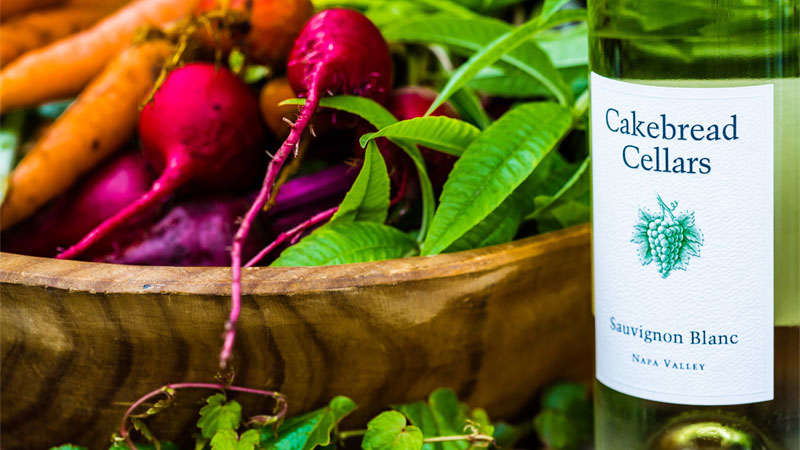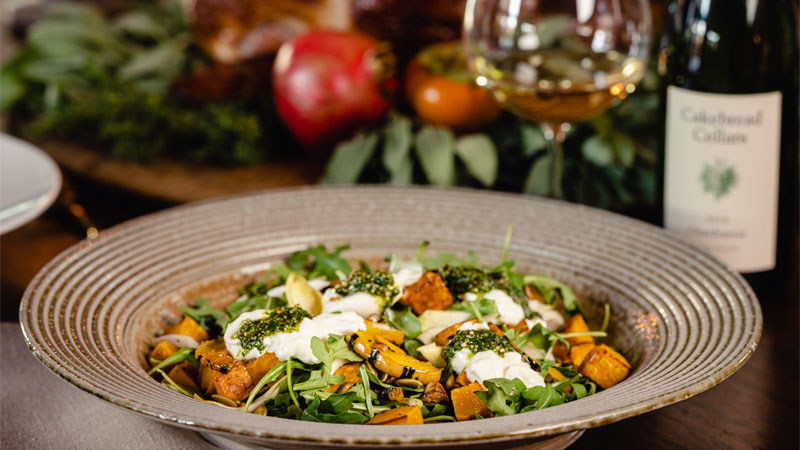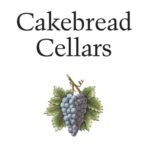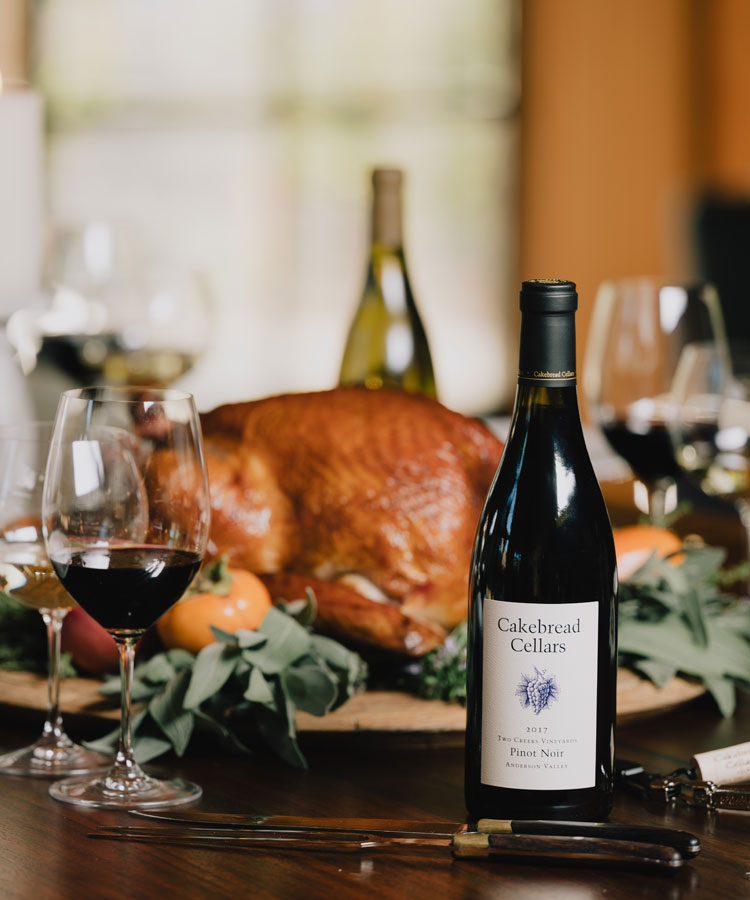
Since 1972, when Jack and Dolores Cakebread first bought the plot of land that evolved into their thriving Napa Valley winery, Cakebread Cellars has made it their mission “to create quality wines that pair best with good food.” The winery remains family-owned today with sons Bruce and Dennis Cakebread continuing the family legacy.
If these days it seems like every winery is incorporating food into its philosophy, Cakebread was way ahead of the curve, playing a role in the emergence of American “foodie” culture in the ’70s by introducing many wine drinkers to the farm-to-table movement that at the time was being proliferated by chefs like James Beard and Alice Waters. Beginning with a humble garden, Cakebread’s culinary program has evolved over the decades, from an annual chef workshop to wine dinners, cellar tours, and Wine and Food Pairing tastings where guests can taste Cakebread wines paired with the freshest seasonal produce from the winery’s original garden.
Indeed, nothing can be said about Cakebread’s culinary efforts without a big nod to Dolores Cakebread, who passed away this fall at the age of 90. A certified Master Gardener and cookbook author, she was the reason food plays such a substantial role in the goings-on of the winery. Cakebread’s culinary director, Brian Streeter, says the winery was a visionary for the Napa Valley as a whole: “The Cakebread family was a proponent of eating locally and seasonally long before it was even a thing,” he explains. “They are also big supporters of our local small artisan food producers that make northern California such a special place for wine and food.”

There may be no better symbol of epicurean influence at Cakebread than the thriving three-quarter acre vegetable garden planted decades ago on the winery property, literally integrating food production into the working vineyard. “The garden still drives all our menu planning to this day,” Chef Streeter says. A September Instagram post shows the bounty of heirloom tomatoes Streeter turned into a Lobster, Tomato, and Corn salad, which he told us is “one of the highlights of the season.” Squash is now in season, which Streeter is working with to create a Winter Squash Salad with Burrata & Pumpkin Seed Pesto.
Considering this legacy, it’s no surprise Cakebread continues to emphasize the important symbiosis between wine and food — on both sides of the equation — led by winemaker Stephanie Jacobs in the cellar and Streeter in the kitchen.
“In order to create wines that pair with food, I pay close attention to the balance of acidity, mouthfeel, and aromas and flavors,” explains Jacobs. “The beauty of our wine” — from structured Napa Cabernets to elegant Pinot Noirs and rich Chardonnays — “is that it showcases the aromas and flavors of the fruit [in the vineyard].” Jacobs notes the use of French oak barrels, as well as a “mix of new and neutral barrels to ensure we don’t overpower the natural fruit expression.” Her goal, she says, is to “balance tradition and innovation within the cellars,” and she notes recent experiments “with different oak fermentation vessel sizes and concrete eggs, as well as trials of native yeast versus cultivated yeast fermentations.” Between tradition and innovation, Jacobs wants to put out “consistent, balanced, age-worthy wines that pair well with the food and company around the table.”
Those wines, which come from more than 15 separate vineyards on 600 acres across the Napa Valley, have a variety of highly pairable notes to them. Jacobs mentions the “apple and pear” of the flagship Cakebread Chardonnay, with its gentle “touch of oak and some minerality on the clean finish.” On the darker end of the spectrum is their flagship Cabernet Sauvignon, a blend of Napa Valley Cabernet grapes “from special spots throughout the region,” says Jacobs, composed to yield a flavor profile that “showcases dark fruits like blackberry and boysenberry with dark chocolate and oak, balanced by bright acidity and lush tannins.” Pairing with the Benchland Select Cabernet, Jacobs recalls “a winter holiday dinner of short ribs” in which “the dark fruit aromas and flavors, along with the firm tannic structure [of the wine] stood up beautifully to the richness and fat of the dish and enhanced more nuanced flavors.”
Among her favorite pairing wines is Cakebread Pinot Noir. “I love our Two Creeks Pinot Noir. It is delicious paired with the smoked turkey that will be on our Thanksgiving table this year. Pinot Noir is a wonderful wine for Thanksgiving. With its bright acidity and soft tannins, it can complement a range of dishes.” says Stephanie Jacobs.
As for Streeter, in his role as winery culinary director, his approach to pairing is almost opposite that of most other chefs; at Cakebread, the wine comes first. “We always begin with the wine we are going to feature and then think about what would be best to serve with it.

Between hosting instructional cooking and pairing videos (e.g., pairing Duck Bolognese with the “silky tannins” of Cakebread’s Two Creeks Pinot Noir) on the Cakebread website and running the “Wine and Food Pairing” tour and tasting program at the winery, Streeter’s learned a lot about how to match food and wine: “The best advice is to consider the weight or intensity of a dish,” he explains. “We talk a lot about alcohol, tannin, and acidity in wine, but the mouthfeel or body of the wine is probably more important when it comes to pairing.”
Streeter says he’s found that wine preferences tend to change with the season, as does his manner of cooking, both of which will steer pairings. “It’s the cooking technique and the intensity of flavors you’ve introduced during cooking that decide the appropriate wine to serve,” he explains. For example, a summer tomato salad might go best with a Cakebread Sauvignon Blanc, but those same tomatoes with seafood and a little aioli might call for a richer Cakebread Chardonnay. “Come fall, once it starts getting darker earlier and temperature drops, I start wanting to cook things that take longer and build up more depth of flavor,” he says. In colder months, he might braise those same heirloom tomatoes with some meatballs to pair with one of Cakebread’s cherry-rich Pinot Noirs.
“There are no right or wrong answers when it comes to wine and food pairing,” says Streeter. If anything, he’s an advocate for experimenting, much like he does at Cakebread every day: “The more you make wine a regular part of your meals, the more comfortable you become deciding what it is you prefer,” he says.
This article is sponsored by Cakebread Cellars.

